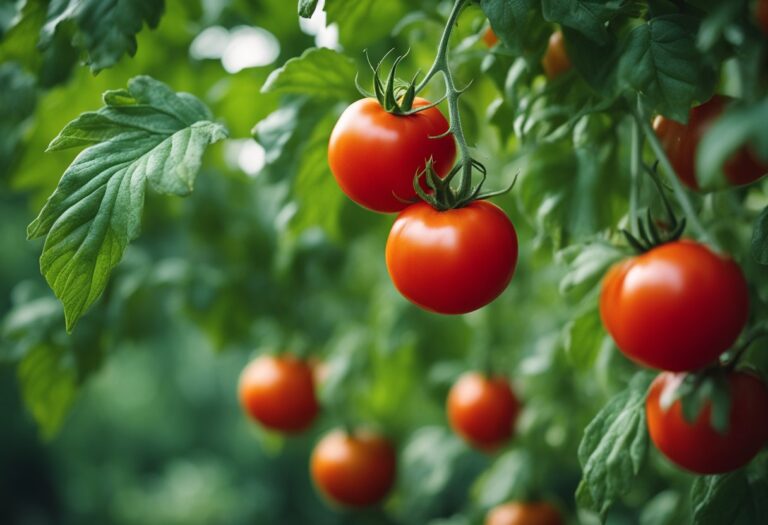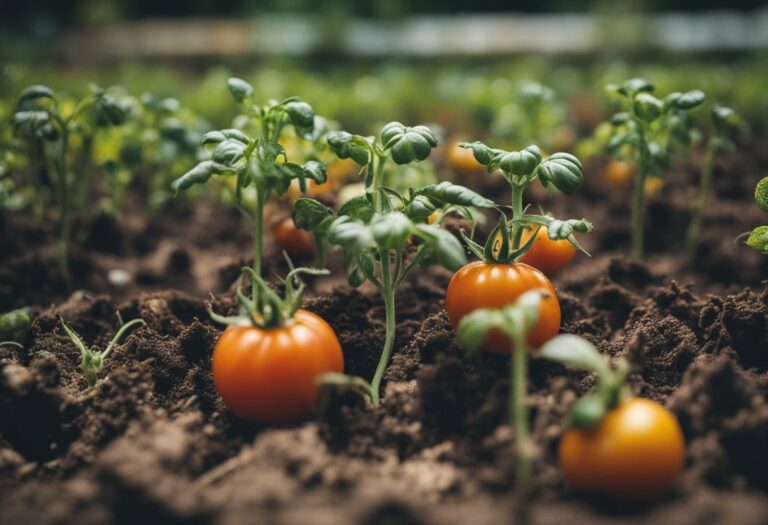Tomato Jam Recipe: A Simple Guide to a Flavorful Condiment
Tomato jam is a delightful way to add a sweet and tangy flavor to your meals. With just a few simple ingredients like fresh tomatoes, sugar, and vinegar, you can create a versatile condiment that pairs beautifully with a variety of dishes. Whether you spread it on toast or use it as a topping for burgers, tomato jam brings a unique taste to the table.
Making tomato jam at home is not only easy but also allows you to control the flavors to suit your preferences. By picking the best tomatoes and mastering the cooking process, you’ll end up with a rich and flavorful jam that you can enjoy year-round. It’s a fun project that transforms your kitchen into a hub of delicious aromas.
Tomato jam also invites endless creativity in serving suggestions. From cheese boards to barbecue meals, it complements a wide range of foods, making it a great addition to any recipe collection.
Key Takeaways
- Select ripe tomatoes for the best flavor in your jam.
- Master the cooking technique to achieve the perfect texture.
- Experiment with various pairings to enhance your dishes.
The Origins of Tomato Jam
Tomato jam has a rich history that combines various cultural influences. Understanding its historical significance and how it varies across cultures can enhance your appreciation for this unique condiment.
Historical Significance
Tomato jam dates back to the early 19th century. The first known recipes appeared in American publications. In 1840, a method for making tomato jam was noted in The American Farmer. By 1843, the term “tomato jam” was used in the Boston Cultivator.
This spread of tomato-based preserves was partly due to the increased popularity of tomatoes in cooking. As preservation techniques improved, people sought ways to use ripe tomatoes. These early recipes often included sugar and spices, offering a sweet-tangy flavor profile.
Cultural Variations
Tomato jam varies widely from region to region. In Southern cooking, for example, it often includes spices like red pepper flakes or Worcestershire sauce, enhancing its savory taste. Recipes from different cultures might use unique ingredients such as herbs or citrus to create diverse flavor combinations.
In some traditions, tomato jam is a staple condiment served alongside biscuits or grilled meats. Recipes evolve over time, influenced by available ingredients and regional tastes. Each version reflects the local culinary heritage, making it a versatile addition to many dishes.
Selecting the Best Tomatoes
Choosing the right tomatoes is crucial for making delicious tomato jam. The variety and ripeness directly affect the taste and texture of your jam. Here’s what to look for when selecting tomatoes.
Tomato Varieties
Different tomato varieties can bring unique flavors to your jam. Common options include:
- Roma Tomatoes: These are meaty with few seeds, making them ideal for sauces and jams. They have a sweet, rich flavor.
- Plum Tomatoes: Similar to Roma, they are also good for cooking due to their low moisture content and rich taste.
- Cherry Tomatoes: These offer a burst of sweetness but can be juicier, which may require adjustments in your recipe.
- Heirloom Tomatoes: Known for their diverse flavors and colors, they can add complexity but may have more moisture to manage.
Consider experimenting with a mix of these varieties to achieve the desired balance of sweetness and acidity in your jam.
Ripeness and Flavor Profiles
When selecting tomatoes, ripeness is key to flavor. Look for tomatoes that are:
- Fully Ripe: They should yield slightly to pressure and have a deep color. Overripe tomatoes may be mushy, while underripe ones can taste sour.
- Fresh Aroma: A fragrant smell often indicates sweetness and ripeness.
- Firm Skin: A good tomato should have smooth, unblemished skin.
Taste is also vital. Aim for tomatoes that are naturally sweet and tangy, as these qualities will enhance your jam. Choosing ripe, flavorful tomatoes will lead to a richer, more delicious end product.
Preparation Techniques
Preparing tomato jam involves several important steps to ensure safety and flavor. Understanding how to properly sanitize jars, handle tomatoes, and cook the mixture can greatly affect the quality of your jam. Here’s what you need to know.
Sanitizing Jars
Before you start the canning process, it’s critical to sanitize your jars. This step prevents bacteria from spoiling your jam.
- Clean Jars: Wash jars with hot, soapy water or run them through the dishwasher.
- Boil: Place the jars in a boiling water bath for about 10 minutes. This will ensure they are free of harmful bacteria.
- Dry and Store: Remove jars from the water bath and set them upside down on a clean towel to dry. Keep them warm to maintain temperature until ready to use.
Taking these steps will help keep your jam safe and delicious.
Skinning and Seeding
Next, prepare the tomatoes. Removing the skin and seeds improves the texture of your jam.
- Blanching: Start by blanching the tomatoes. Boil them for 30-60 seconds, then transfer to ice water. This makes the skin easier to peel.
- Peeling: Once cooled, gently peel off the skins with your fingers or a small knife.
- Seeding: Cut the tomatoes in half and scoop out the seeds using a spoon. This step helps achieve a smoother consistency in your jam.
These actions will enhance the overall flavor and mouthfeel of your final product.
Cooking Methods
Cooking your tomato jam correctly is crucial for achieving the right texture and flavor.
- Use a Heavy-Bottomed Pot: This helps distribute heat evenly and prevents burning.
- Combine Ingredients: Mix chopped tomatoes, sugar, and any additional ingredients in the pot.
- Simmering: Cook the mixture over medium-low heat. Stir occasionally to prevent sticking. Continue cooking for about two hours until thickened.
Keep an eye on the texture; it should transform from a sauce to a jam consistency. Taste your creation as it cooks to adjust flavors as needed.
Mastering the Cooking Process
Cooking tomato jam requires attention to detail in flavor balancing, achieving the right consistency, and ensuring proper sterilization. Each step plays a crucial role in creating a delicious and safe product.
Balancing Flavors
To create a delicious tomato jam, you need to balance sweetness, acidity, and spice. Start by using ripe tomatoes for natural sweetness.
Key ingredients for flavor:
- Sugar: Enhances sweetness and helps with preservation. Adjust based on the ripeness of your tomatoes.
- Acidic components: Lemon juice or vinegar brightens the flavor and balances sweetness. They also help set the jam.
- Spices: Adding spices like cinnamon or jalapeño can introduce warmth. Taste as you cook to find the perfect balance.
As you combine these ingredients, take small taste tests. This practice helps you achieve a taste profile that works for your preference.
Consistency and Texture
Achieving the right consistency is essential for a quality jam. The cooking time will greatly influence this factor.
To ensure the best texture:
- Cook Down: Allow the mixture to simmer patiently. This helps evaporate excess water.
- Jelling Test: You can check for doneness by placing a spoonful on a plate and letting it cool. If it holds its shape, it’s ready.
- Blending: For a smoother jam, consider using an immersion blender briefly.
Be careful not to overcook, as this can lead to a sauce-like texture. The goal is a spreadable yet thick consistency.
Sterilization and Preservation
Proper sterilization is vital to prevent spoilage. Follow these steps to ensure your jars are safe for canning.
Steps for sterilization:
- Prepare jars: Wash jars and lids in hot, soapy water. Rinse thoroughly.
- Sterilize: Place jars in simmering water for at least 10 minutes. This process kills bacteria.
- Filling: Fill jars with hot jam, leaving a 1/4 inch headspace. Wipe the rims before sealing.
Canning process:
- Place filled jars in a boiling water canner. Make sure water covers the jars by at least an inch.
- Process for recommended time, usually about 10-20 minutes depending on elevation and jar size.
This careful process ensures your tomato jam will last and remain delicious for months.
Serving and Pairing Ideas
Tomato jam can elevate various meals and snacks, adding a unique twist to traditional dishes. Its sweet and savory flavors make it a versatile ingredient for breakfast, cheese boards, and even desserts.
Breakfast Dishes
Start your day with a delightful breakfast by spreading tomato jam on toasted sourdough or whole grain bread. Pair it with a soft-boiled egg for a filling option. You can also mix the jam into scrambled eggs for a sweet and tangy flavor boost.
Another idea is adding a dollop of tomato jam to an avocado toast. The creamy avocado complements the jam perfectly, creating a balanced dish.
For those who enjoy pancakes or waffles, consider using tomato jam as a topping instead of syrup. The combination is surprisingly delicious and can be garnished with fresh herbs for added flavor.
Cheese Pairings
When creating a cheese board, tomato jam can be an excellent accompaniment. Pair it with creamy cheeses like brie or goat cheese, as their mildness balances the jam’s sweetness.
Hard cheeses, like aged cheddar, also work well. The contrast between the sharpness of the cheese and the sweetness of the jam creates an exciting flavor profile.
Serve tomato jam alongside crackers or bread for a simple yet elegant appetizer. Drizzle some olive oil and add fresh herbs to enhance the presentation and taste.
Dessert Creations
Surprisingly, tomato jam can find a place in dessert recipes too. Try using it as a filling for pastries or tarts. Its sweetness can complement various fruits, making it a unique ingredient.
You can also stir it into yogurt or use it as a topping for vanilla ice cream. The mix of creamy and sweet flavors can create a memorable dessert experience.
Another idea is to use tomato jam in a cake recipe. Swirl it into batter for a unique twist on classic treats, offering guests something unexpected and flavorful.
Frequently Asked Questions
This section addresses common questions about making and using tomato jam, covering steps, traditional recipes, sweetness, canning processes, savory applications, and differences between types of tomatoes used.
What are the steps for making a simple tomato jam?
To make a simple tomato jam, start by dicing fresh tomatoes. Combine them with sugar, garlic, vinegar, and spices in a skillet. Cook over medium heat until the mixture thickens, stirring occasionally.
Can you provide a traditional recipe for old-fashioned tomato jam?
A traditional recipe typically includes ripe tomatoes, sugar, lemon juice, and spices like cinnamon and cloves. Cook the ingredients down until the mixture thickens. Pour into sterilized jars and seal while hot.
How can you create a sweet tomato jam?
To create a sweeter tomato jam, increase the amount of sugar in your recipe. You can also add fruits like peaches or apricots to enhance the sweetness and flavor. Cook the mixture until it reaches the desired consistency.
What is the process for canning tomato jam to ensure its longevity?
For canning, ladle hot jam into sterilized jars, leaving a quarter-inch headspace. Wipe the rim, apply the lid, and process in a boiling water bath for 15-20 minutes. This helps preserve the jam for longer shelf life.
In what ways can tomato jam be incorporated into savory dishes?
Tomato jam can be used as a glaze for meats, a spread for sandwiches, or a topping for burgers. It also pairs well with cheese boards or can be stirred into sauces for added flavor.
What are the differences in the preparation of cherry tomato jam compared to regular tomato jam?
Cherry tomato jam is usually sweeter and has a different texture due to the smaller size of the tomatoes. You’ll want to adjust cooking times and sugar levels to account for their natural sweetness and juiciness.


